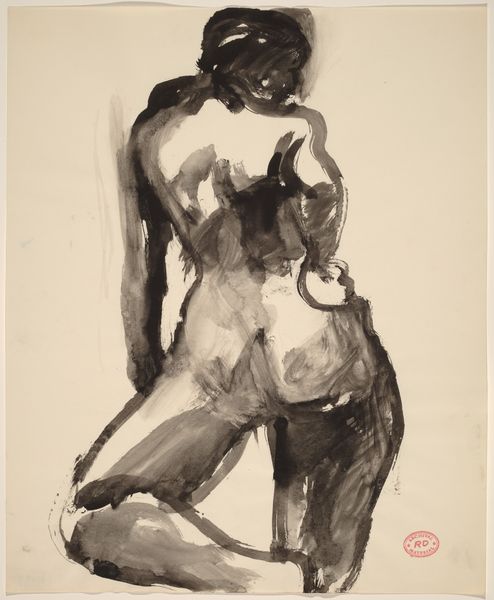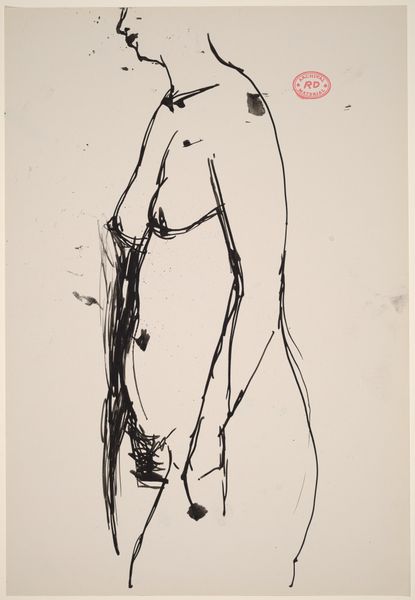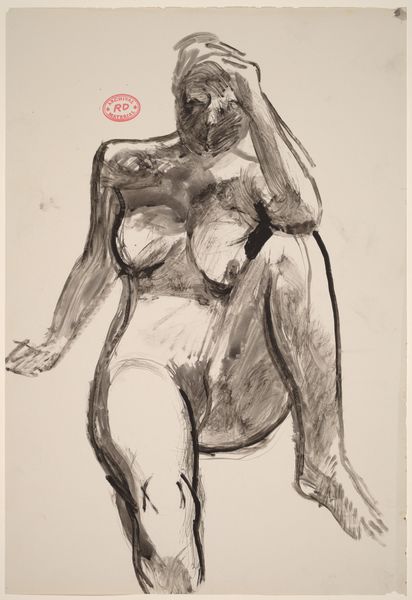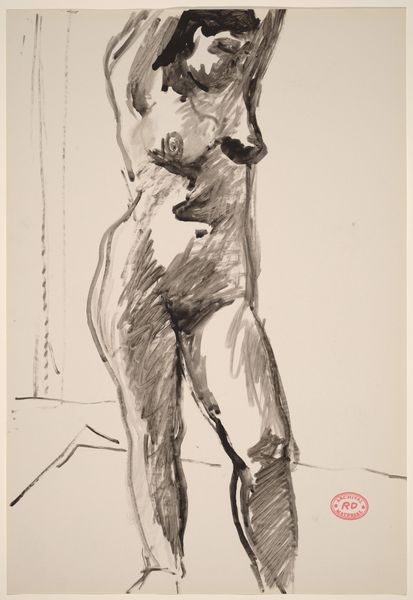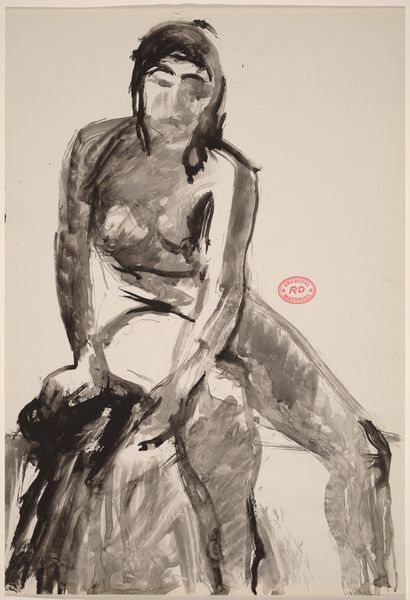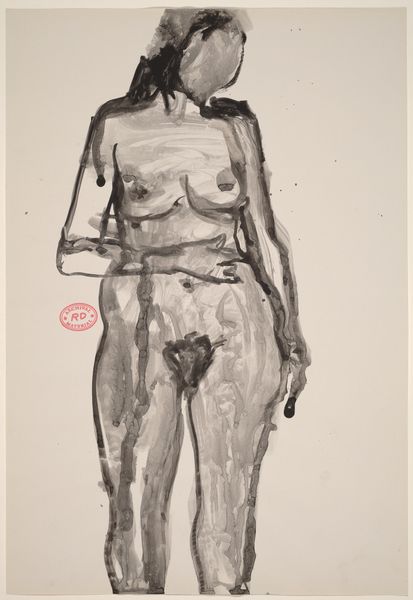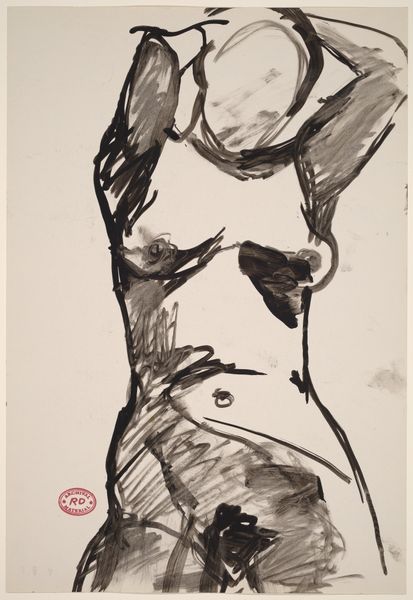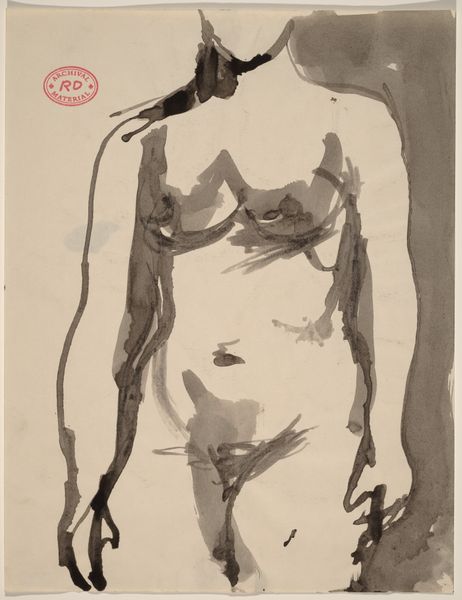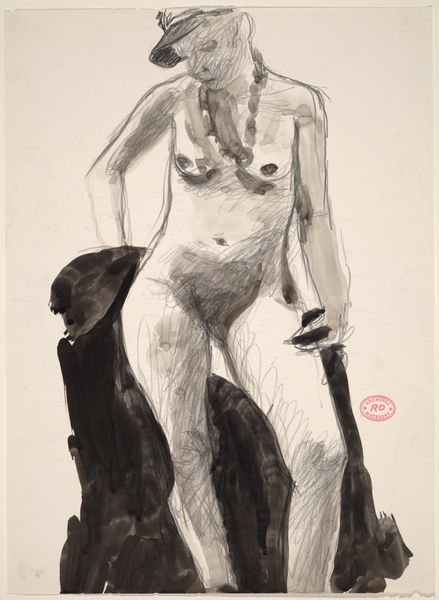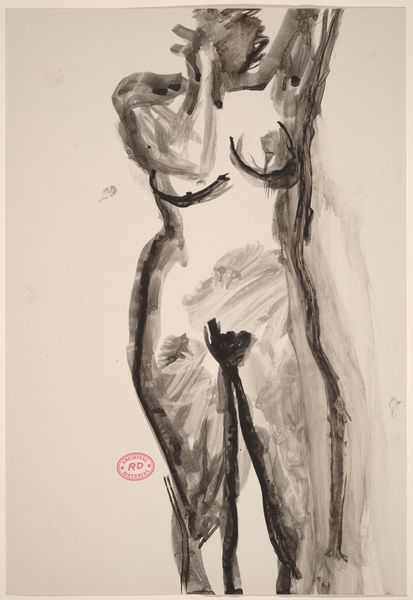![Untitled [seated nude with her left arm over the chair back] by Richard Diebenkorn](/_next/image?url=https%3A%2F%2Fd2w8kbdekdi1gv.cloudfront.net%2FeyJidWNrZXQiOiAiYXJ0ZXJhLWltYWdlcy1idWNrZXQiLCAia2V5IjogImFydHdvcmtzLzA4OWNhOGEyLTlhYTMtNGE5YS04NTIyLTg1ZjBlN2IwOTkwNy8wODljYThhMi05YWEzLTRhOWEtODUyMi04NWYwZTdiMDk5MDdfZnVsbC5qcGciLCAiZWRpdHMiOiB7InJlc2l6ZSI6IHsid2lkdGgiOiAxOTIwLCAiaGVpZ2h0IjogMTkyMCwgImZpdCI6ICJpbnNpZGUifX19&w=3840&q=75)
Untitled [seated nude with her left arm over the chair back] 1955 - 1967
0:00
0:00
#
bay-area-figurative-movement
Dimensions: overall: 58 x 43.2 cm (22 13/16 x 17 in.)
Copyright: National Gallery of Art: CC0 1.0
Curator: Richard Diebenkorn, an artist closely associated with Bay Area Figurative Movement, created this intriguing ink drawing, titled "Untitled [seated nude with her left arm over the chair back]", sometime between 1955 and 1967. Editor: Striking! There's an immediacy here; the bold, dark lines and wash create a dramatic sense of light and shadow that gives the figure both weight and a raw, unfinished quality. Curator: The confident, almost economical use of ink is definitely central to its impact. We see the paper asserting itself amidst the drawn lines—quite integral, isn't it? This particular use of negative space allows for the sketch's evocative tension. Editor: Absolutely. That balance is key to Diebenkorn's practice here, creating what I would consider the political agency of female subjects—the viewer isn't invited to appropriate it, rather understand its formal, structured complexity through ink. The unworked space becomes as charged as the areas covered in ink. It disrupts any attempt at a smooth, palatable narrative about women. Curator: Considering this work sits within the mid-20th century, it inevitably responds to the historical representation of the female nude, wouldn't you agree? We see how the female form has been mythologized, eroticized, and disciplined across historical context—one may even note, here, an active undoing of this pictorial past through abstractive visual forms. Editor: Precisely. In terms of structure, there’s something very post-impressionistic, maybe even some expressionist quality at work. It invites us to really interrogate traditional approaches toward the rendering of figures through loose gestural marks. Curator: Do you believe Diebenkorn intentionally rejects smooth idealism? Editor: No question. In his artistic landscape, abstraction functions almost as a deconstruction. These rapid-stroke sketches become performative spaces to engage with the very question of representation—inviting others to partake in its politics and discourse as well. Curator: So, what do you think we glean from such direct mark-making? Editor: Its beauty and importance are undeniable. For me, this reveals art’s potential for enacting change beyond museums. Curator: Thank you. It truly reveals an extraordinary depth through seemingly simple means.
Comments
No comments
Be the first to comment and join the conversation on the ultimate creative platform.
